Dr. Saburo Horikawa
Department of Sociology,
Hosei University (Tokyo, Japan)
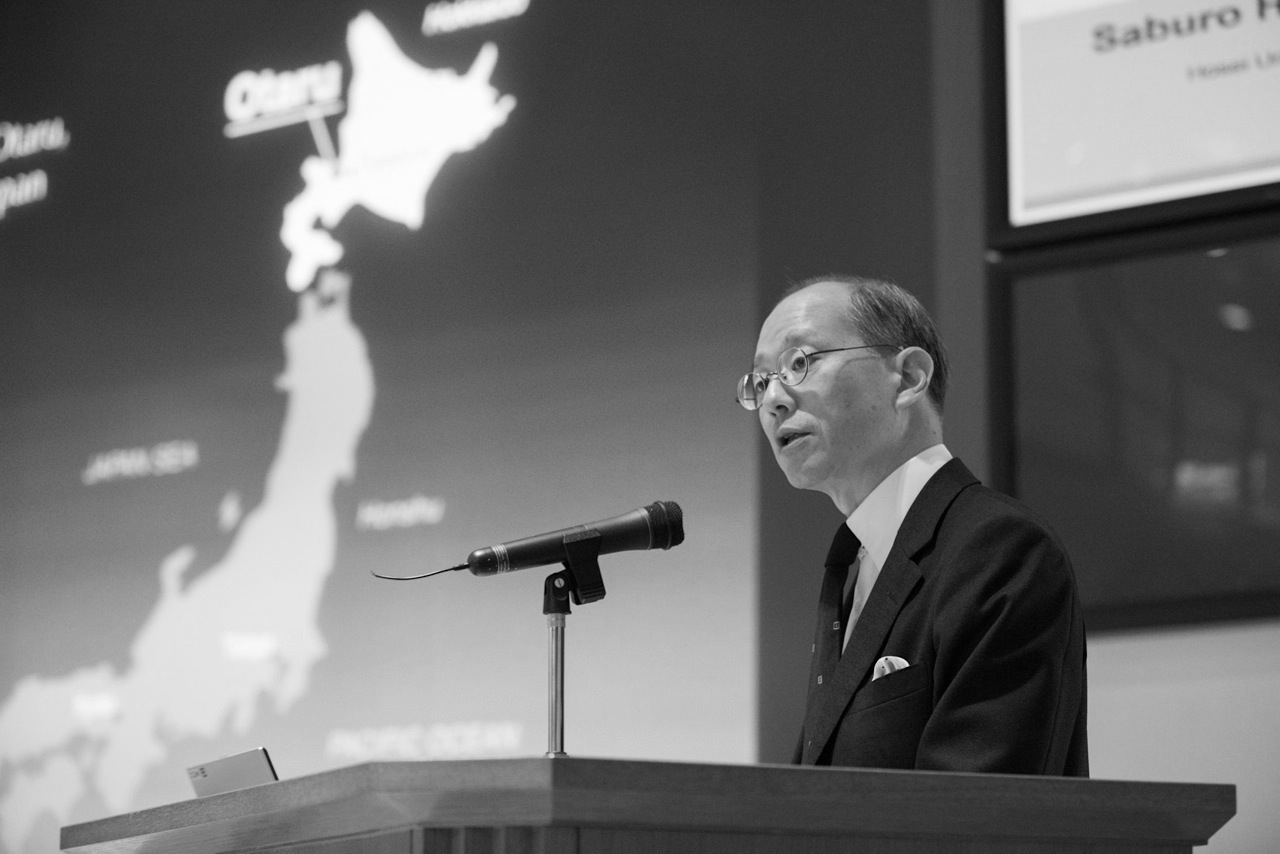

[Abstract]This book is the result of the symposium “Le patrimoine industriel en France et au Japon” (The Industrial heritage in France and Japan) held at Institut français de recherche sur le Japon à la Maison franco-japonaise in Tokyo in November 2022.

[Abstract]It is the environmental sociology textbook for Chinese college students. Prof. Horikawa contributed the Chapter 4.
> China Social Sciences Press

[Abstract]
(Cover photo and book design: Saburo Horikawa)

[Abstract] This encyclopedia is a part of the 30th anniversary celebration of the Japanese Association for Environmental Sociology (JAES). More than 150 members of the JAES contributed to this massive publication project, spending an entire 3 years to complete it. The result is the most comprehensive account of Japanese environmental sociology today. Prof. Horikawa served as a member of the Editorial Board.
(Cover design: Saburo Horikawa with Seibundo Printing)
> Maruzen
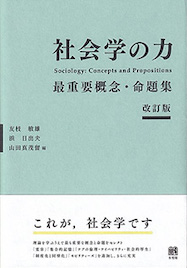
[Abstract] “Sphere of benefit/sphere of suffering” theory is one of the original theories of Japanese environmental Sociology. By focusing on the spatial distribution of the “sphere of benefit/sphere of suffering” in environmental problems, it enables us to clearly elucidate the structural deficiency of democracy in dealing with environmental issues. This short piece is an introduction to the theory.
> Yuhikaku
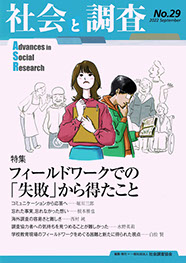
[Abstract] Fieldwork is an essential part of sociological research, but it often ends in failure. What lessons can we learn from failures occurring during fieldwork? Is failure during fieldwork actually the highroad to success? Based on his own 38 years of experience as a fieldworker, the author reflects upon these questions.
> Advances in Social Research

[Abstract] “Sphere of benefit/sphere of suffering” theory is one of the original theories of Japanese environmental Sociology. The concept originated during the late 1970s and 1980s from the research on public hazards surrounding the Shinkansen bullet train in Japan, and has since grown into a middle-range theory. The theory focuses on the spatial distribution of the “sphere of benefit/sphere of suffering” in environmental problems, that is, whether the “benefit” and “suffering” spheres overlap. When the two spheres overlap, the damage from environmental problems is plain to see for everyone in the spheres, leading to the solution of the problem. When the two spheres are separated, however, it is difficult for the people in those spheres to reach a shared understanding of the damage and even the problem itself. Moreover, the shape of the suffering sphere matters. The municipality in which the victims live cannot rightly represent the interests of the victims when the suffering sphere spreads only alongside the train tracks. Those victims are in the minority in every municipality alongside the tracks, putting them at a disadvantage. Sphere of benefit/sphere of suffering theory enables us to clearly elucidate the structural deficiency of democracy in dealing with environmental issues. It makes it possible for us to question the publicness of largescale development projects. Sphere of benefit/sphere of suffering theory is of great significance for constructing public sociology.
> Abstract in Chinese
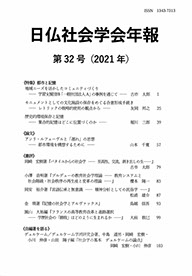
[Abstract]Studies that deal with memory and collective memory are arguably on the rise and sociological studies of historic preservation are no exception, for collective memory plays a crucial role therein. Those studies assume that preservationists try to preserve the collectively held memories associated with certain sites and structures in their communities. But the data obtained from author’s 37 years of fieldwork on the preservation movement in Otaru (Hokkaido, Japan) suggest otherwise. Preservation activists claimed that Otaru Canal and the surrounding built environment must be saved because the loss of that physical built environment would alter the character of the local community. It was not the memories that they tried to preserve; it was the lived environment that forms the basis of their very existence. The central concern of the preservation movement was thus not the wholesale rejection of change, but rather an argument for giving residents—not city planners or outside experts—control over the extent and pace of change. Paradoxically enough, preservation activists actually argued that the area around the canal should change. The author questions whether there is a space for collective memory in historic preservation studies.
> Revue de la Société japono-française de Sociologie

[Abstract]The core members of the Otaru Canal Preservation Movement were educated in the early 1960s when the principle of popular sovereignty as well as post-war democracy was taught with zeal. Movement leaders demanded that redevelopment of Otaru be done according to the principle of post-war democracy. The preservation movement was quite radical: it demanded the preservation of old buildings and canals, when the entire nation believed anything old was obsolete, and conservative, while anything new was thought to be better, brighter, and progressive. The one irony here is that the most progressive citizen activism that embodied the ideal of post-war Japanese democracy used the most conservative word, “preservation.” This essay examines the rise and fall of the preservation movement, comparing the rhetoric of the movement participants with those of the SEALDs. Although they are many years apart, their rhetorical style of self-presentation is strikingly similar. They would always start by saying: “I am just a local young man,” or “I am just a collage girl.” What is important in their rhetoric is to portray themselves as someone not “dangerous” nor “the reds” (“aka”). This is mostly because the attack on the left by the conservative faction has been successful, and anyone who questions the status quo had to distance themselves from “the reds” by deploying a certain conservative rhetorical style. The activists in Otaru and their rhetorical style is, the author argues, the roots of SEALDs’ rhetorical styles.
> Keio-Harvard Project
> Lexington Books
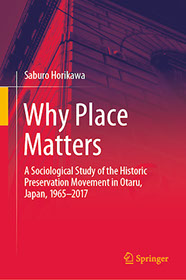
[Abstract]This book is based on the author’s 33 years of intensive fieldwork. It chronicles a major movement that shaped the preservation policy in Japan in the 1980s and 1990s, providing “thick descriptions” of preservationists that are not available anywhere else in English. It also provides clear answers to a series of pressing questions about preservationists: are they building-huggers, are they selfish and myopic home-owners, or are they merely obstacles to urban planning and urban renewal? Since 1984, Saburo Horikawa, Professor of Sociology at Hosei University in Tokyo, has continuously studied the movement to preserve the Otaru Canal in Otaru, Japan. This book shows that the preservation movement was neither conservative nor an obstacle. Rather, the movement sought to promote changes in which the residents’ “place” would continue to be theirs. As such, the word “preservation” does not mean the prevention of growth and development, but rather its control. As is shown in this study, preservation allows for and can even promote change. The original Japanese version of this book (published by the University of Tokyo Press) has won 3 major academic awards; most notably, “The Ishikawa Prize,” the highest award bestowed by the City Planning Institute of Japan. It is extremely unusual that a sociology book should receive such important recognition from the city planning discipline.
> Springer Link
> Reviewed in the Journal of the American Planning Association
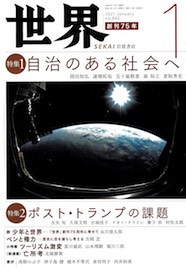
[Abstract](The article has been selected as “the best 3 articles of the Month” of The Asahi Shinbun newspaper in January 2021.)
> Sekai (Iwanami Shoten)
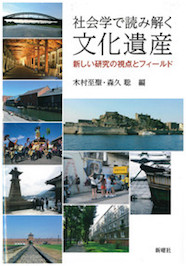
[Abstract]
> Shinyosha

[Abstract]
(Cover photo and book design: Saburo Horikawa)

[Abstract]This is a reply to the book review on my book Why Place Matters (University of Tokyo Press, February 2018 [in Japanese]) by Prof. Atsushi Makino (University of Kumamoto).
> the Journal of Environmental Sociology
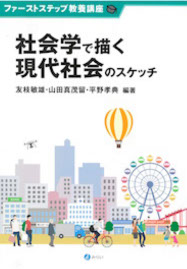
[Abstract]This short piece asks a big question: Why are there no nuclear power plants in Tokyo? The piece tries to answer this rather-too-big but certainly most important question since Fukushima with sociological notions in environmental sociology. Compact and concise, it is written for the freshman learning sociology for the first time.
> Mirai
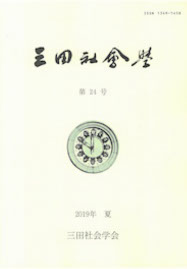
[Abstract]This is a reply to the book review on my book Why Place Matters (University of Tokyo Press, February 2018 [in Japanese]) by Dr. Nobuhiko Ogawa (Nara Women’s University), one of the leading scholars in heritage studies.
> Mita Journal of Sociology
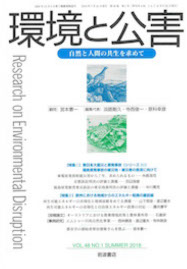
[Abstract]Based on the experience of the principal editor of Nuclear Power Plant Disaster and the Evacuation: A Chronology, this article explores how chronologies as a method enrich our understanding of Fkushima nuclear disaster as well as environmental sociology.
> Research on Environmental Disruption (Iwanami)
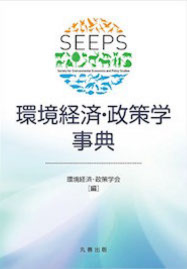
[Abstract]This short piece is designed to provide a concise overview of, and the present state of, Japanese environmental sociology to the general readers and environmental economists in particular.
> Maruzen
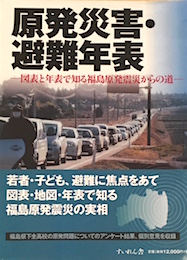
[Abstract]Among the many findings of Nuclear Power Plant Disaster and the Evacuation, one of the most important is the way in which evacuation has separated families, demonstrated by an evacuation chronology and individual evacuation chronologies. The book avoids abstract descriptions of evacuation. Instead, it paints a distinct picture of the challenges of evacuation through the words of the evacuees themselves, who were interviewed by members of the editorial board during fieldwork. These experiences are illustrated using original evacuation diagrams, which were made to be accessible to junior high and high school students. Another important aspect is the inclusion of a basic chronology of events following the Chernobyl disaster to permit comparisons between events after the two disasters. It is our hope that this volume may lead to more accurate understandings of the Fukushima nuclear power plant disaster and problems associated with evacuation.
> Suirensha
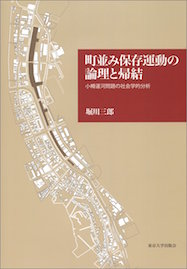
[Abstract]This book’s question can be summed up in one sentence: “How is ‘change’ in urban environments socially controlled?” Urban environments continually change day by day. Although to change and become new is considered to be good, there are also people who advocate and campaign to preserve urban environments unchanged. How do cities change, or not, as the two sides vie with one another? This book is a sociological elucidation of the process by which change is socially controlled, with the focus on urban environments. This means using the perspectives and tools of urban sociology and environmental sociology to reframe the themes of “townscape preservation” and “historiccal environment preservation,” which have been subjects of architecture and urban planning. Specifically, th author deals with the “Otaru Canal preservation movement,” which arose in Otaru City, Hokkaido Prefecture, Japan, from 1973 through 1985. This issue was an approximately 12-year standoff between the preservation movement and Otaru City authorities over whether the “Otaru Canal” in the city’s port district should be reclaimed to build a six-lane road, or preserved for use as a tourism resource. Using the data from 47 field surveys conducted from March 1984 to September 2016, the author follows the preservation movement’s arguments and the actions taken by the city authorities in its standoff with the movement, and throw light on what the townscape preservation movement was trying to accomplish, and on why it advocated canal preservation.
The book has been reviewed in 9 academic journals and 2 newspapers.
(Book design: Saburo Horikawa with Mr. Kotaro Kato)
> University of Tokyo Press
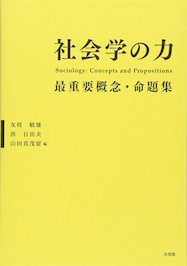
[Abstract]“Sphere of benefit/sphere of suffering” theory is one of the original theories of Japanese environmental Sociology. By focusing on the spatial distribution of the “sphere of benefit/sphere of suffering” in environmental problems, it enables us to clearly elucidate the structural deficiency of democracy in dealing with environmental issues. This short piece is an introduction to the theory.
> Yuhikaku
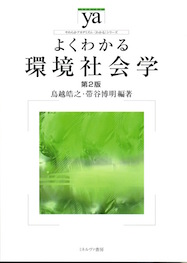
[Abstract]This short piece is an introduction to the century-old question “Why preserve?” and its relevance to the theories of environmental sociology.
> Mineruva
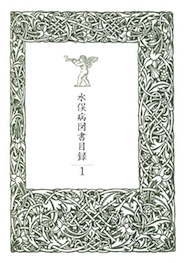
[Abstract]This is the most comprehensive annotated bibliography ever published on the Minamata Disease (methyl mercury poisoning that happened in southern part of Japan in the 1950s).
> Minamata Forum
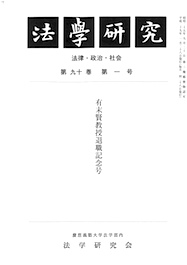
[Abstract]Japanese environmental sociology is like a “black hole.” It constantly absorbs the world’s latest theoretical innovations so diligently but without emitting any research findings of its own, making itself unavailable to the world outside. It is because almost all its entire literature has been written in a minority language, Japanese.But is that the only reason for being a “black hole”? The Japanese Association for Environmental Sociology (JAES) is the world’s largest academic association in the field of environmental sociology. It has been publishing the world’s very first journal dedicated to the discipline since 1995. Why, then, has the established field of study as such become a “black hole”? The language barrier does not seem to explain it all.This paper, therefore, tries to make the ”black hole” visible, by portraying the present state of Japanese environmental sociology and the recent challenges it faces. By adapting the “institutional approach” by Philip Selznick, the author analyses the rise of the discipline in Japan in the 1970s-80s, focusing on what it has gained and lost through the process of growing into such an established field. In the days when the term “environmental sociology” still did not exist, researchers (who would later become the first environmental sociologists) in different sociological sub-disciplines struggled to analyze pollution problems by applying the concepts of their respective fields. Japan’s environmental sociology arose out of the process of grappling with Japan’s grave pollution problems. For that reason, going to pollution-ravaged communities and performing long-term research has become a tradition. The JAES has grown into an “institution” reflecting this tradition (“the infusion of values”) and in turn shapes the mind-set of its members. The JAES no longer is a mere “organization” but, the author claims, has become an “institution” that demands internal commitment to its core values.
> The Journal of Law, Politics and Sociology (Keio University)
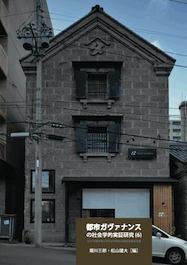
(Cover photo and book design: Saburo Horikawa)

(Cover photo and book design: Saburo Horikawa)

[Abstract]
> Akashi Shoten
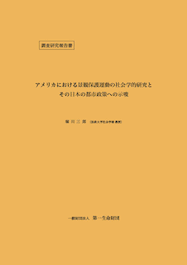
[Abstract]The intersection of 9th and Olive streets in downtown St. Louis, Missouri, was called “the Corner.” It once was the prime location in the city, and on The Corner stood a magnificent U.S. Custom House and Post Office building which was affectionately called “the Old Post Office” by the locals. This building, with its immediate neighbor to the west, “the Century Building,” has been a battleground of historic preservation twice.
The first battle was about the Old Post Office (OPO) in the 1960s and 1970s. A citizen-led preservation movement, “the Committee to Save the Old Post Office,” reversed the federal government’s decision to demolish the OPO and was instrumental in gaining National Historic Landmark designation. The incident ultimately led to the passage of two important federal preservation laws. It was a major triumph in the history of American historic preservation movements.
The second battle, however, was an entirely different story. Developers claimed in the 2000s that, in order to renovate the OPO, the adjacent Century Building should be demolished to make way for a proposed parking garage. The locals stood up just as in the first battle, but this time only to find the National Trust for Historic Preservation, the preeminent leader in the preservation movement, was supporting the developers. The 108 year old marble-clad Century was demolished in 2004. It was a major defeat for the preservation community in the U.S.
Why did local preservationists fight against the National Trust? Why did the Trust agree to the demolition of part of the historic fabric of “the Corner?” The author chronicles the two battles, and also compares them with a Japanese preservation case in Otaru, Hokkaido. The data used and reported here is based on fieldwork carried out by the author in the U.S. (2007-2015) and Japan (1984-2014).
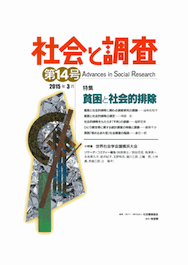
[Abstract]A short essay/impression on the the 18th World Congress of Sociology, International Sociological Association, held in Yokohama, Japan in July 2014.
> Advances in Social Research
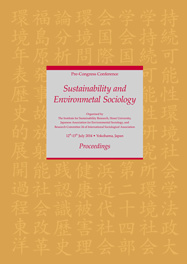
[Abstract]
(Cover illustration and book design: Saburo Horikawa)
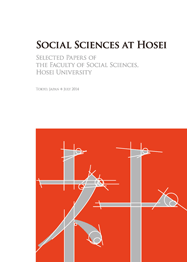
[Abstract]Minamata disease is one of the first and most serious cases of disease caused by environmental contamination with methylmercury. It was first discovered in Minamata, Japan, in 1956. There are 2,951 people (both living and deceased) whom the Japanese government certified as victims, but it is said that the actual number of victims is far greater. This paper traces the 40-year history of Minamata disease and reports on the present state and remaining problems related to the disease. The lessons of Minamata and evidence of similar environmental pollution now occurring outside Japan are described in the final section. The data used and reported here is based on both the existing literature and interview-focused research carried out by the author between 1995 and 1997. A reprint of 1999 article that appeared in Ambiente & Sociedade.
(Cover illustration and book design: Saburo Horikawa)
> Full text (in Portugese)
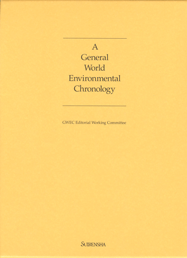
[Abstract]This is the world’s first-ever chronology of the environment, covering environmental issues and events throughout the world, from the Industrial Age up to 2010. It brings together data and insights from 138 chronologies compiled 125 countries and regions. This chronology is a crystallization of the findings gleaned from the collaborative work and achievements of environmental researchers throughout East Asia, as well as some 150 researchers from 15 countries including Spain, Portugal, Croatia, U.S.A., and Estonia. Each item includes a source.
> Sustainability Institute, Hosei University
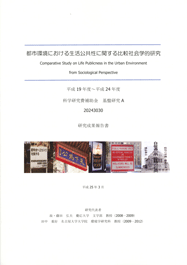
[Abstract]

[Abstract]
(Cover photo and book design: Saburo Horikawa)
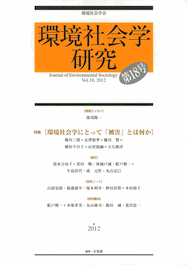
[Abstract]The massive earthquake that struck Japan on March 11, 2011, an event now referred to as “3/11,” was a disaster composed of multiple calamities: the huge earthquake and the huge tsunami that followed it, the chain of severe nuclear power plant accidents, and then the existence of a large area contaminated with radiation, as well as large numbers of evacuees. Since it is impossible to list every individual disaster and accident, it is best to refer to this as a severe compound disaster. For this reason a huge number of questions have been raised about 3/11, but they might all be contained in one: “Was the system we had until 3/11 a good one?” This is because not just the specific contents of policies and plans, but the policy-making and planning processes themselves, are being fundamentally and deeply questioned. To express this with a comparison, the question may be not whether a particular nuclear power plant should be restarted, but in fact whether or not to “restart” the “3/11 System.” How can environmental sociology respond to this question? The strategy proposed in this essay is to reinterpret the question “Was the system we had until 3/11 a good one?” as “What does ‘suffering’ mean for environmental sociology?” The reason for this is that the understanding of harm and suffering is our most urgent task. Many scholars who have gone to the disaster sites may be working to deepen our understanding of the facts and to help with recovery, but the fact is that many of the things being debated are far removed from what we environmental sociologists observed and felt in the field. Especially now, as some attempt to play down the suffering, or even assert that no more harm and suffering exist, it is even more important that we environmental sociologists show what we have learned about how to express the reality of suffering. Particularly now, when the “harm” and “suffering” described by other fields of academic study seem to differ so greatly from what we have sensed in the field, it is extremely important, not just for academe but for society as a whole, to discuss suffering as understood in environmental sociology. Without a doubt, this will help make possible a common project with other social science disciplines to clarify the harm that is still not clear and to discuss the suffering that we have not been able to discuss. The task—and most important contribution—of the field of environmental sociology has been and must continue to be to do what only sociology can do: make otherwise invisible suffering visible and give voice to the previously voiceless. This essay is a preliminary sketch of such a common project.
Keywords: theories of the construction of suffering, regional recovery, aid for evacuees, Fukushima Number One nuclear power plant accident, choice
> The Journal of Environmental Sociology
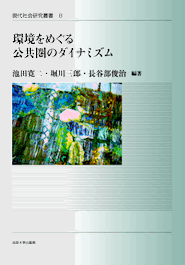
[Abstract]
> Hosei University Press
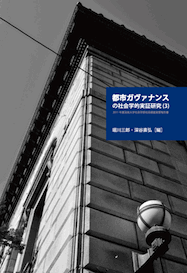
[Abstract]
(Cover photo and book design: Saburo Horikawa)
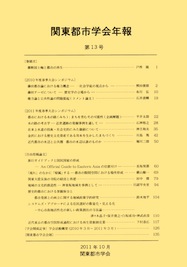
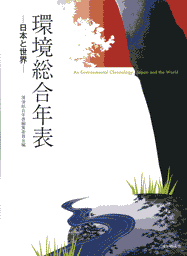
[Abstract]The very first and only comprehensive scholarly chronology on the environmental problems in Japanese. The editors continued to work hard on the English version as well, and, finally in July 2014, the enlarged English version (A General World Environmental Chronology) has been published by Suirensha.
> Hanmoto Dotto Comu
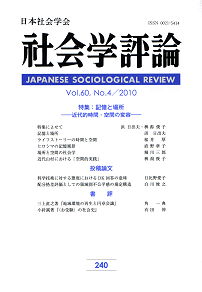
[Abstract]The idea that time and space are homogeneous, one of the fundamental premises of the modern age, has long been under siege. Le Corbusier’s vision of the functional city, as described in his bookLa ville radieusehas lost its “radiance.” We have come to realize that the city is not a transparent, three-dimensional “space” in which any particular content can be exchanged for any other. Rather, we have rediscovered that it is a “place” embodying a variety of memories and meanings, an inconvertible “something,” and that it is impossible to reduce it to a mere land parcel of a certain length and width. The urban places we live in are not interchangeable. The word “preservation” therefore means not the prevention but the control of growth and development. Preservation allows and even promotes change. “Place,” however, has a dual nature. It can be a base for resistance, or a myth whose consumption legitimizes the denaturing and transforming of place into space. What needs to be asked, therefore, is who is resisting this transformation, and to what extent they are resisting the myth that legitimizes it. Since 1984, the author has continuously studied the movement to preserve the Otaru Canal, and his studies show that the movement was neither conservative nor aesthetic. Rather, the movement sought to promote changes in which the residents’ “place” would continue to be theirs. It rejected the city government’s monopoly of power over city planning, and the idea that a “place” belonging to the residents should be seen as a mere “space” for road construction. It demanded local autonomy as a means for residents to control change. The movement raises the question of how we should build cities that take into account local residents’ own “places,” and reminds sociologists of the importance of incorporating the historic environment in their analyses.
Keywords: space/place, historic preservation, social movement, environmental sociology, urban sociology, memory, townscape, urban development, Otaru, Hokkaido, Japan
> Japanese Sociological Review
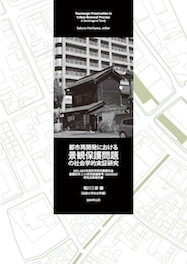
[Abstract]
(Cover photo, drawing, and book design: Saburo Horikawa)

[概要]This short piece is an introduction to the century-old question “Why preserve?” and its relevance to the theories of environmental sociology. [The 2nd Edition was published in 2017.]
> Mineruva Shobo

[Abstract]
(Cover photo and book design: Saburo Horikawa)
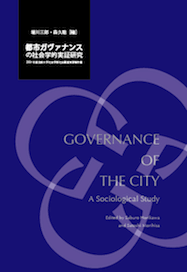
[Abstract]
(Cover and book design: Saburo Horikawa)
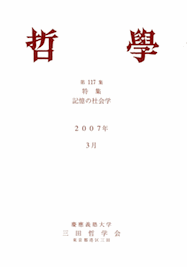
[Abstract]John Ruskin once wrote: “We may live without her [architecture], and worship without her, but we cannot remember without her” (Ruskin, The Seven Lamps of Architecture, 1849, p.147). His writing provided reasoning for preservation of old buildings. More than a century and a half later, preservation movements such as the British and American National Trusts have become popular and are currently enjoying a moment of expansion. Why, then, has there been almost no sociological literature on the topic, even though sociology has traditionally paid very close attention to various kinds of social movements? Why has sociology been so silent about the people who try to remember the City? Tracing the history and development of preservation movements in industrial countries, and that of the U.S. in particular, this paper reports present issues in historic preservation and analyzes how preservation philosophy has evolved over time. In doing so, the author shows how an early prototype of preservation movement played a crucial role in discouraging sociology from dealing with the preservation issue, with the result that sociology has failed to convincingly portray who those preservationists are. Through a case study of a major preservation movement in Japan, the author claims that the movement was hardly monolithic and identifies at least four different types of participants within the preservation movement, giving a much clearer picture of the preservationists. The data used and reported here is based on fieldwork carried out by the author in the U.S. (2004-2006) and Japan (1984-2006).
> Philosophy (Keio University)
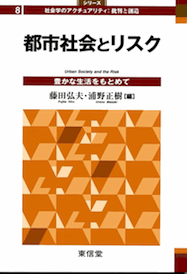
[Abstract]
> Toshindo Publishing

[Abstract]
> Akashi Shoten

[Abstract]This is the very first attempt by the Minamata Forum to publish an annotated bibliography of works in English on the Minamata Disease issue. Most of the writing and editing was done by Prof. Timothy George (history, University of Rhode Island, U.S.A.) and Prof. Saburo Horikawa (sociology, Hosei University, Tokyo, Japan).
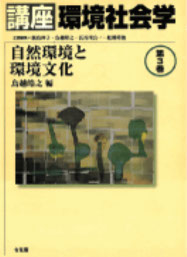
[Abstract]
> Yuhikaku

[Abstract]
> Shinyo-sha

[Abstract]
> Shinsho Kan

[Abstract]
> Journal of Environmental Sociology
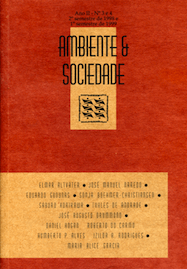
[Abstract in Portuguese]A doença de Minamata é um dos primeiros e mais sérios casos de doença provocada por contaminação ambiental com metilmercúrio. Ela foi detectada pela primeira vez em Minamata, Japão, no ano de 1956. Existem 2.951 pessoas (entre vivos e já falecidos) que o governo japonês identificou como vítimas, mas diz-se que o número real é muito maior. Esse artigo recupera os 40 anos de história da doença de Minamata e registra também a situação atual e os problemas remanescentes relacionados à doença. As lições tiradas de Minamata e as evidências de poluição ambiental semelhante que ocorrem atualmente fora do Japão são descritas na última seção. Os dados utilizados e registrados nesse trabalho são baseados na literatura disponível e em entrevistas realizadas pelo autor entre 1995 e 1997.
[Abstract in English]Minamata disease is one of the first and most serious cases of disease caused by environmental contamination with methylmercury. It was first discovered in Minamata, Japan, in 1956. There are 2,951 people (both living and deceased) whom the Japanese government certified as victims, but it is said that the actual number of victims is far greater. This paper traces the 40-year history of Minamata disease and reports on the present state and remaining problems related to the disease. The lessons of Minamata and evidence of similar environmental pollution now occurring outside Japan are described in the final section. The data used and reported here is based on both the existing literature and interview-focused research carried out by the author between 1995 and 1997.
Reprinted in: Social Sciences at Hosei (2014), pp.117-130.
> Full text (in Portuguese; PDF)
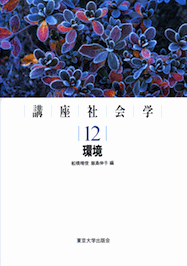
[Abstract]
> University of Tokyo Press
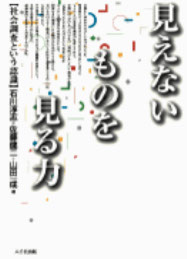
[Abstract]

[Abstract]
> Kobundo
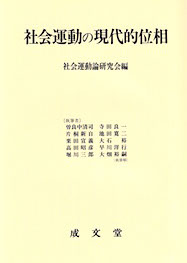
[Abstract]
> Seibundo
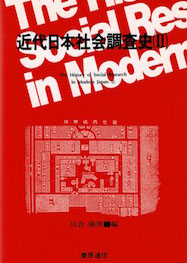
[Abstract]
> Keio University Press (Keio Tsushin)
